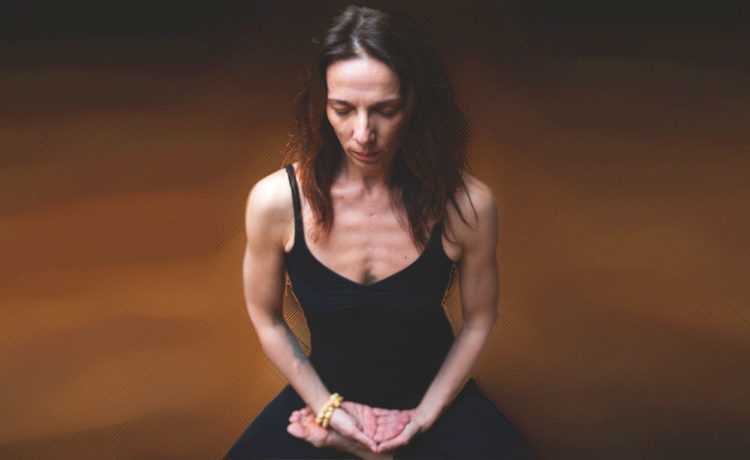
Forms of Freedom
By Keely Rakushin Garfield, December, 2017
A while ago, I went to the zendo where I regularly practice meditation and, donning my robes and grabbing a cushion, headed into the meditation hall to sit. Instead of being greeted by the familiar neat rows of cushions and fellow practitioners sitting quietly, everything and everyone was all over the place. Ignoring my puzzled expression, my teacher abruptly instructed me to “Just sit anywhere.” I found an open space and carefully arranged myself on my pillow, settling in. I wasn’t sure what was going on, but I was determined to focus and embrace silence and stillness.
As soon as I had found my first few breaths, my peace of mind was interrupted. Instead of the usual melodious bells that indicated it was time for the sangha to rise and join in kinhin—walking meditation—there was a solitary loud wooden “clack.” We all stumbled to our feet, blinking into the fluorescent lights that had not yet been dimmed to set the mood. Still hopeful that order might be restored, I placed my hands in gassho in front of my fragmented heart.
“Just walk anywhere,” my teacher said, and began traipsing around casually. The mindful ballet we perform with each other in perfect lines was at once transformed into a crazy jig. It was like trying to navigate a clear path through Grand Central Station at rush hour with the cacophony of voices in your head providing irritated accompaniment: “Get out of my way, stupid!”
When my teacher said, “OK, you can sit down,” I was not near my spot, and so I had to sit on someone else’s cushion, which was too high, too firm, and too near the fan! I wondered if somehow I was in an episode of Stranger Things, and had slipped into the Upside Down. Then my teacher’s gentle tone resumed: “OK, that’s enough of that. Let’s reset the temple!”
We talked, then, about forms and ritual and their roles and importance in cultivating concentration and transforming practice. Form creates a container inside of which you can let go of anything that is not relevant to practice. The practice itself is illuminated as distractions take a back seat. The distractions are still present—they are all still my teachers—but they potentially lose some definition as the bigger picture comes into view.
Today, when I came into the yoga studio to teach, my students were dutifully lined up in rows, yoga mats cheek by jowl, blankets and blocks neatly stacked alongside. Unceremoniously, I asked everyone to get up and go put their yoga mats somewhere else—maybe behind the column or on top of someone else’s mat or facing the “wrong” way. I said, “Put your props out of reach.”
You know where I’m going, but they didn’t. Some looked confused, some annoyed, some excited.
“OK, sirsanasana,” I said, “or maybe hanumanasana.” Some looked like they might cry. Before anyone could move, I said, “OK, let’s reset the temple!” Svaha!
Krama is a Sanskrit word that denotes a thoughtful sequence of events, or step-by-step process by which we approach each asana, gradually developing knowledge and intimacy with the poses. This approach ultimately leads us to encounter ourselves as whole and connected—we experience the interrelated and evolving nature of the asanas and recognize that we, too, are interrelated and evolving. Paradoxically, it’s our observance of order, of sequence, of ritual, of form, that serves to bring us face-to-face with the formless—with pure possibility. Desikachar describes this awareness as having “no form, no gender, no qualities, no features.” Perhaps this is what moksha, or real freedom, is.
Back on track in class, the students moved through a series of poses preparing for hanumanasana. Now that they did not have to worry about where their mat or props were, or if they could trust their teacher to guide them safely and soundly through the practice, they were able to concentrate and relax: sthirum sukham asanamum! Each one was now held in the secure arms of the structure and sequence, and consequently able to add their own divine flair. One student said afterwards that they better understood how all the parts of yoga related to each other. That it felt good to be organized, and that it helped them pay attention to their practice. I think it also made everyone more sensitive to each other.
As a teacher, I now notice more and more a kind of resistance among many students to what I shall call the way of yoga—the form. It’s all very loosey-goosey, downward-doggy, or whatever flight-of-fancy pose they like, regardless of the teacher’s careful directions. Blocks mostly get used as mini-altars for iPhones, or trays for coffee and green juice.
It used to be a point of pride to fold your blanket nicely at the end of class and store it neatly for the sangha sister or brother who might use it next. It used to be a thing to sit up when the teacher entered the room, and to do the little bow at the conclusion of the practice together. “Namaste,” we’d say, “the light within me honors the light in you.” I wonder, have the lights gone out?
I think not. Krishnamacharya, the father of vinyasa yoga, literally met his students at the gate, and after guiding them through practice, accompanied them back to the gate. It was more than a formality. Like Krishnamacharya, I want to travel with my students barefoot along the path of liberation. I want to be a braver and more compassionate teacher. It is not enough to simply link the poses together. It is also my responsibility to demonstrate the connection between folding my blankets, and offering a blanket to someone who needs it. The way of yoga extends beyond the boundary of the yoga studio’s doors.
On the train home, I witnessed an old man with a cane stand and give his seat to a young girl with a heavy package. He insisted. She smiled and sat down. The ceremony of offering and accepting a seat had a certain formality to it, but seeing this made me feel as free as a bird.

